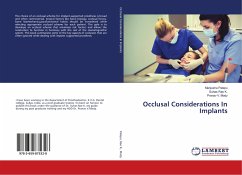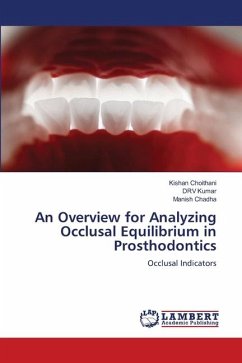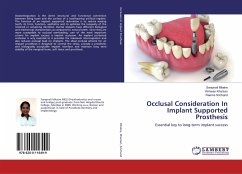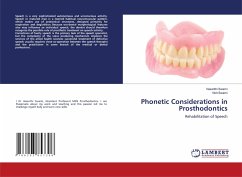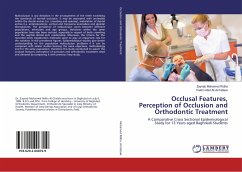
Occlusal Considerations in Implant Prosthodontics
Implants cannot bail out faulty occlusion
Versandkostenfrei!
Versandfertig in 6-10 Tagen
47,99 €
inkl. MwSt.

PAYBACK Punkte
24 °P sammeln!
Determining an occlusal scheme for the restoration of implants requires careful consideration. This stems from the fact that after osseointegration, mechanical stresses beyond the physical limits of hard tissues have been suggested as the primary cause of initial and longterm bone loss around implants. The choice of occlusal scheme for implant-supported prosthesis is broad and often controversial. Almost all concepts are based on those developed with natural dentition and are transposed to implant support systems with a few modifications .The probable reason for this practice is the similarity...
Determining an occlusal scheme for the restoration of implants requires careful consideration. This stems from the fact that after osseointegration, mechanical stresses beyond the physical limits of hard tissues have been suggested as the primary cause of initial and longterm bone loss around implants. The choice of occlusal scheme for implant-supported prosthesis is broad and often controversial. Almost all concepts are based on those developed with natural dentition and are transposed to implant support systems with a few modifications .The probable reason for this practice is the similarity in the velocity, the pattern of movement and the operating muscles that are used by patients with implants and those with natural dentitions. Moreover, it has been established that the clinical success and longevity of implants can be achieved by biomechanically controlled occlusion. This implies that the occlusion provided must follow sound mechanical principles, direct forces predominantly along the long axis of the implant body, and minimize off-centered forces. The same should be aimed to impart and enhance biological stability.





